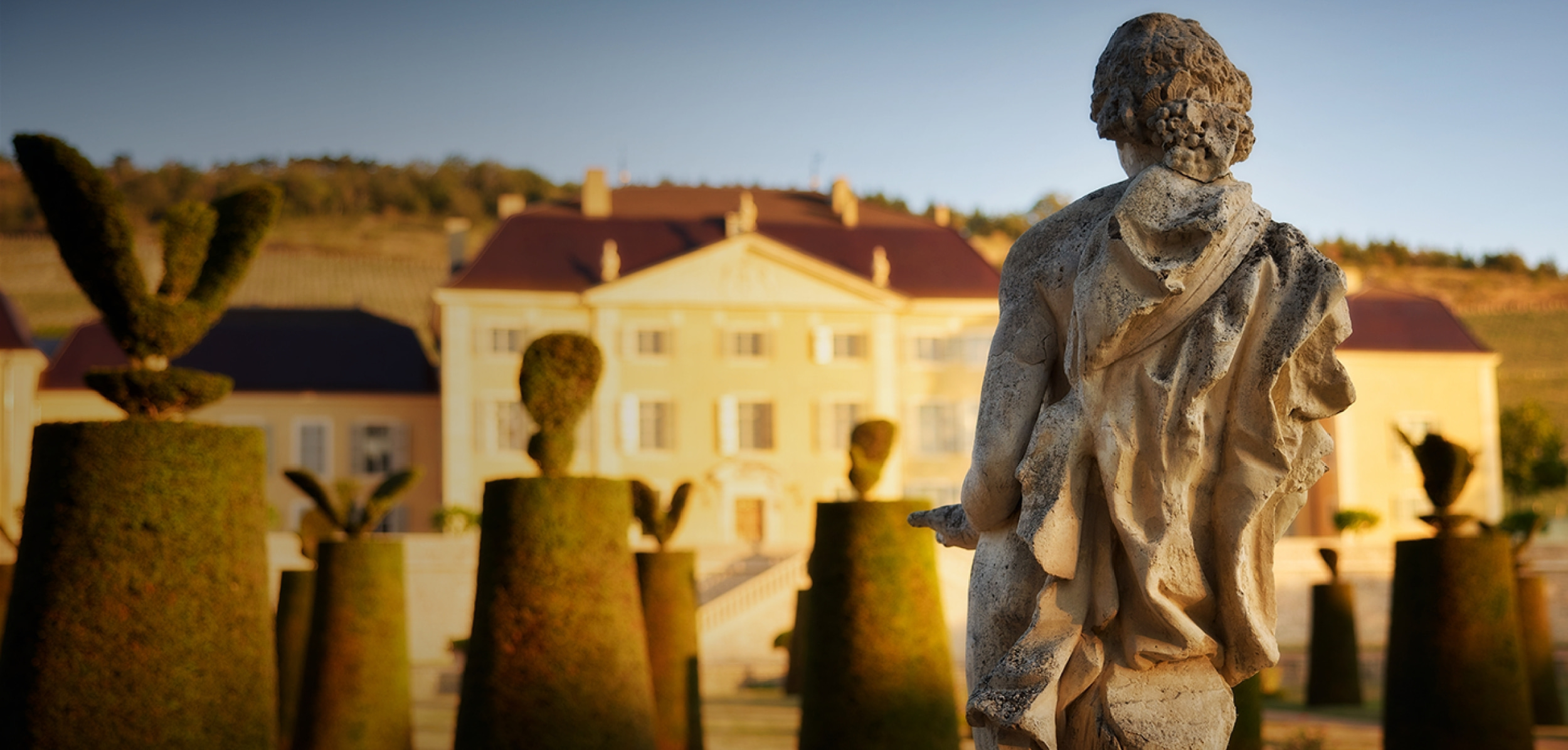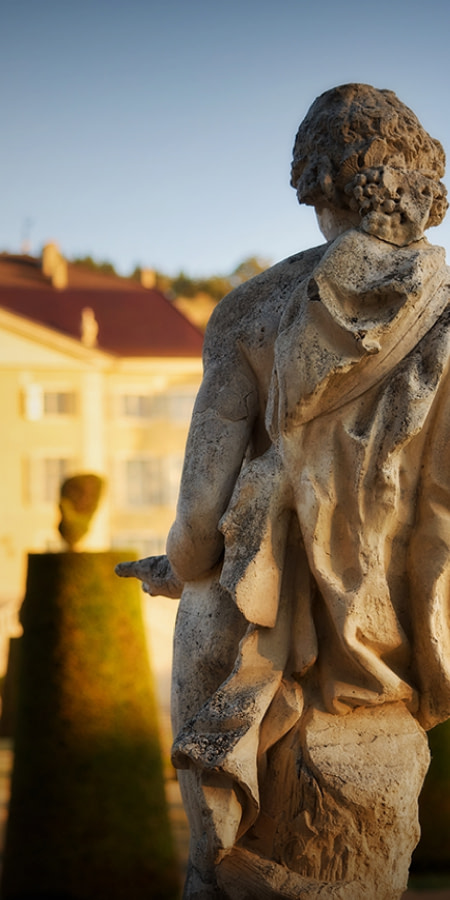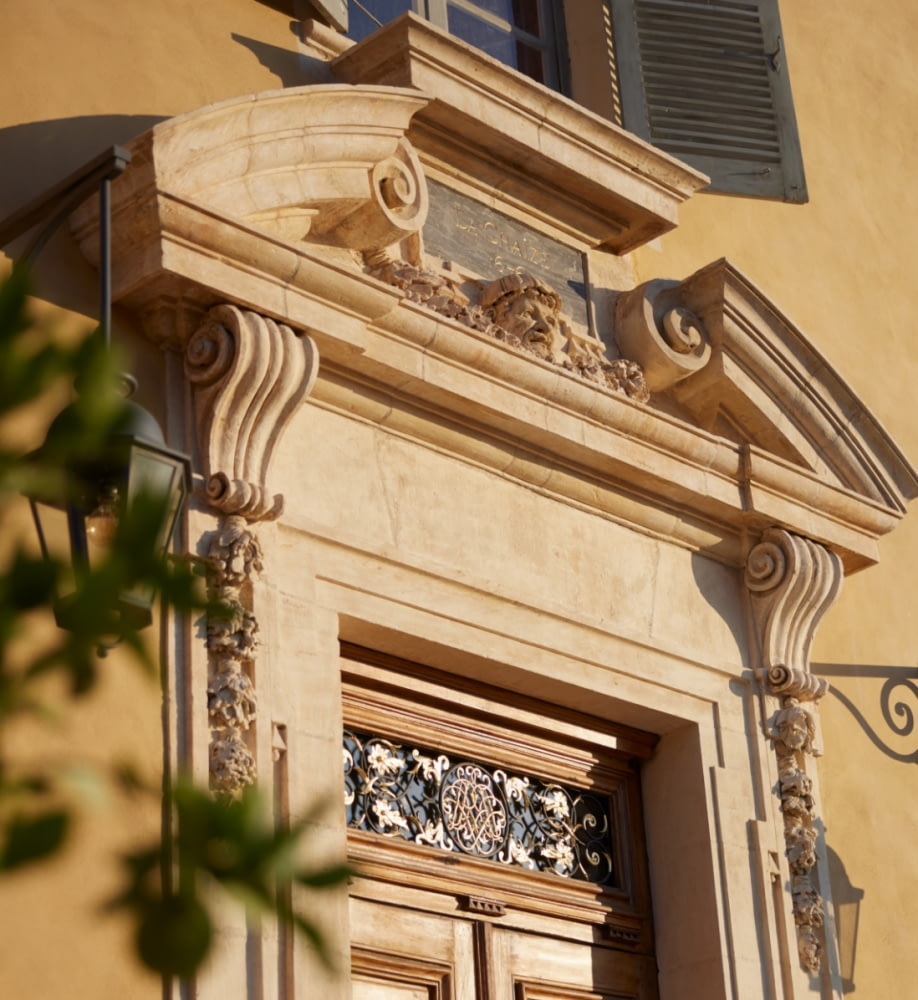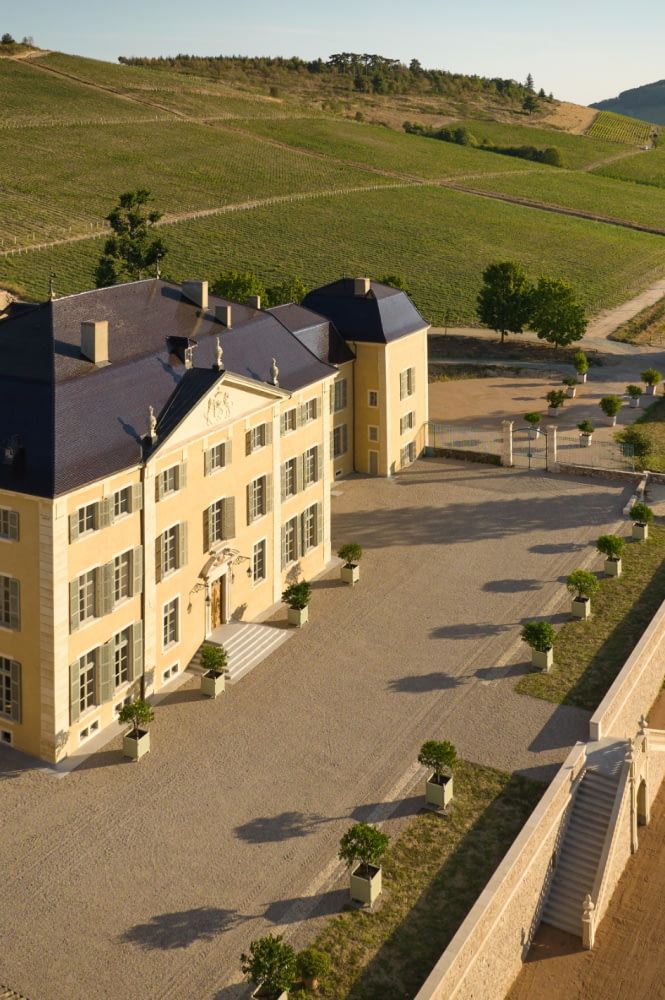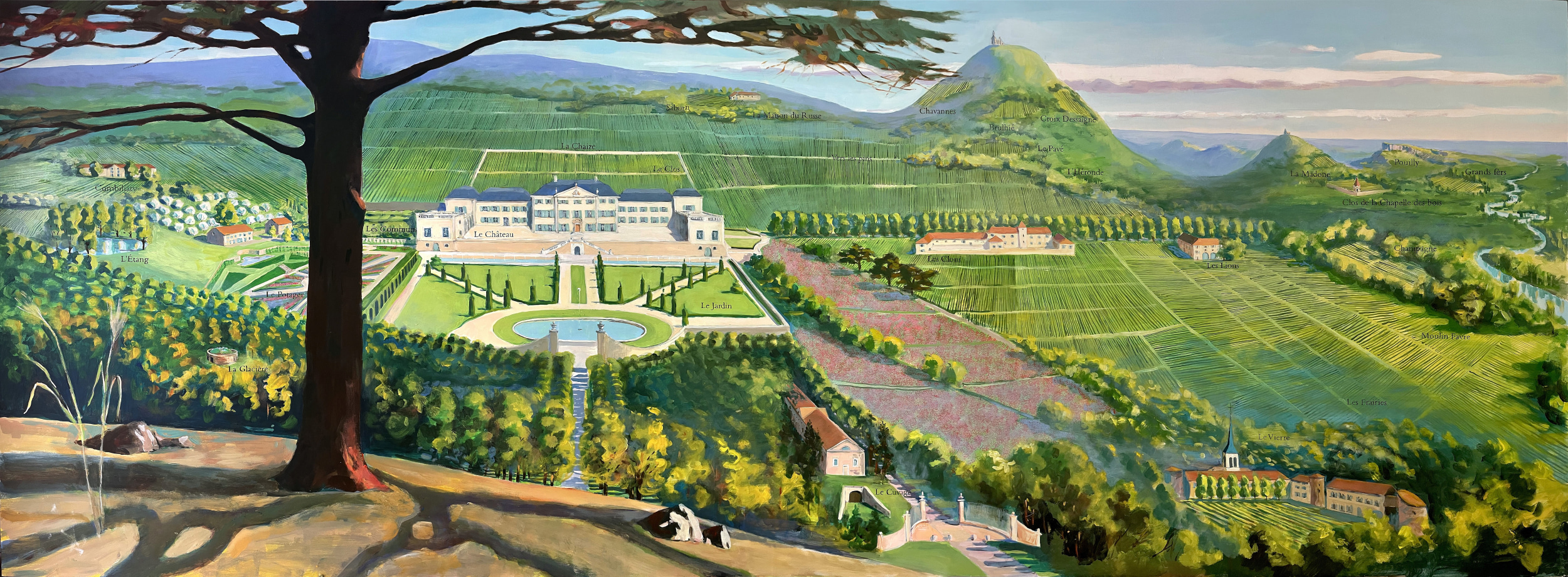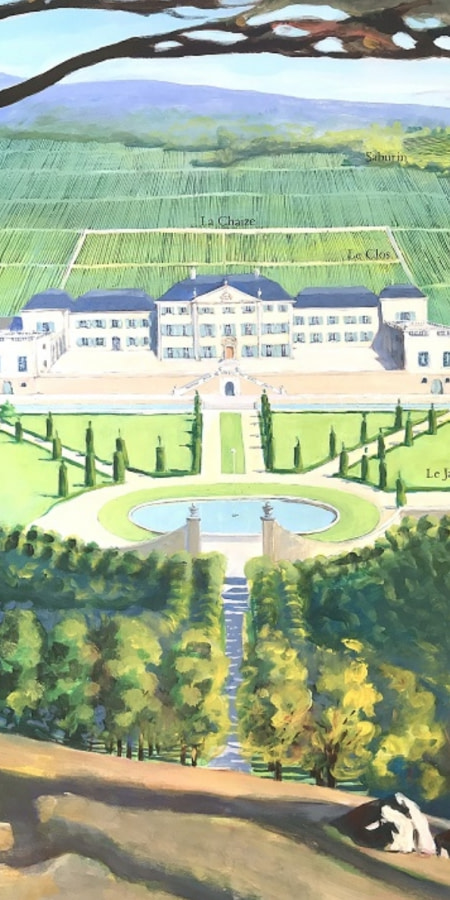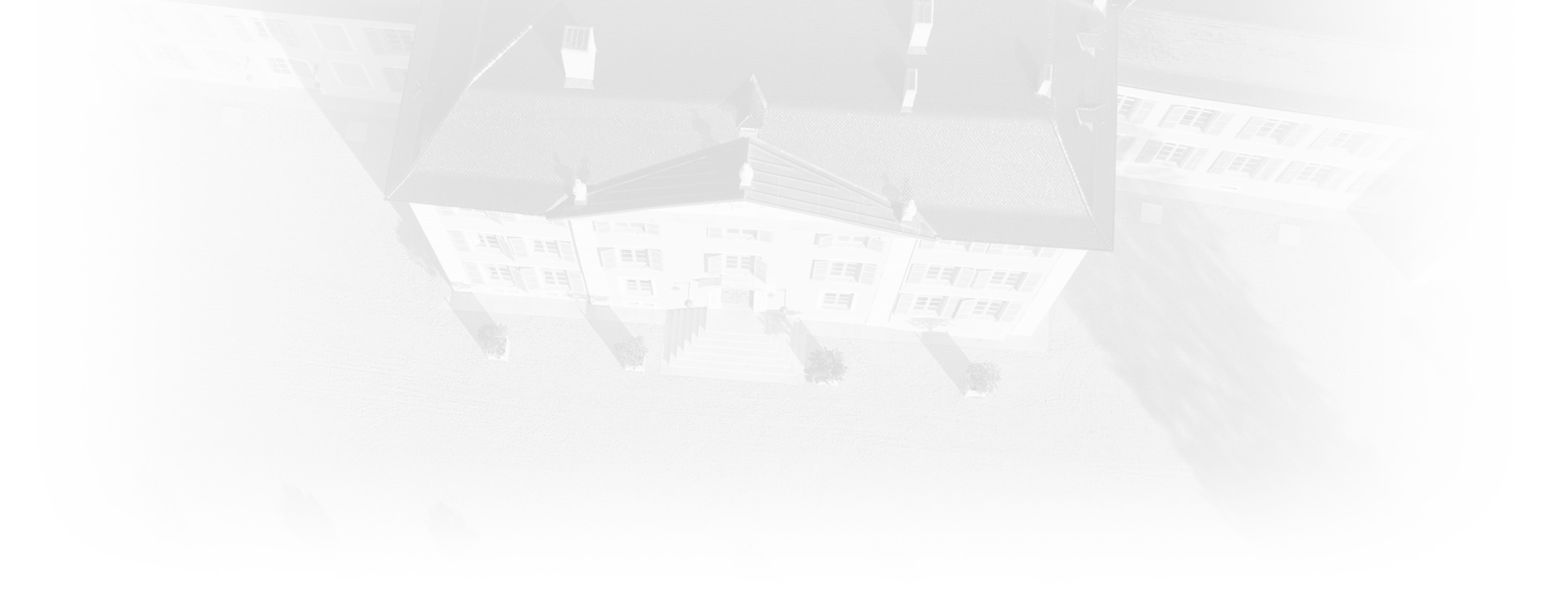Are you sure you want to perform this action?
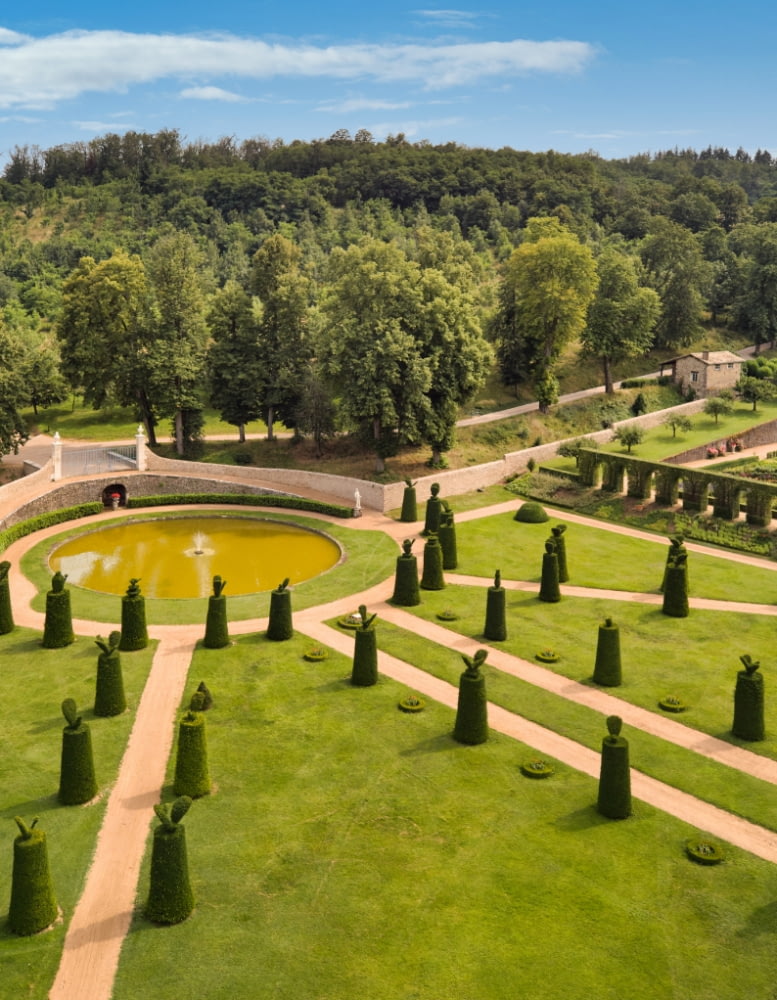
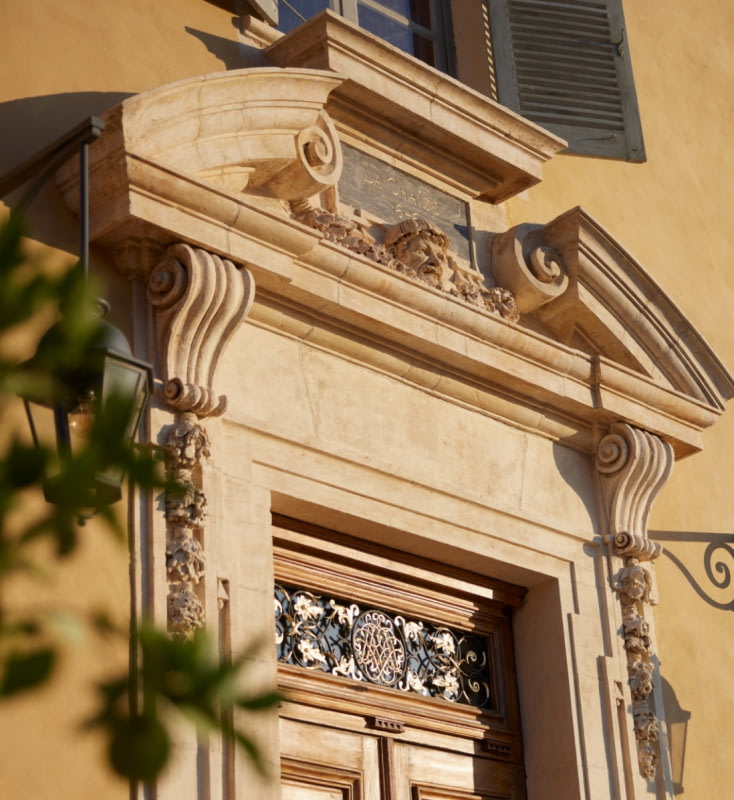
The Roots
of our
HISTORY
A nationally classified heritage site (Monument Historique), one-of-a-kind in the Beaujolais region, Château de La Chaize, has been a family-run wine-producing estate for 350 years !
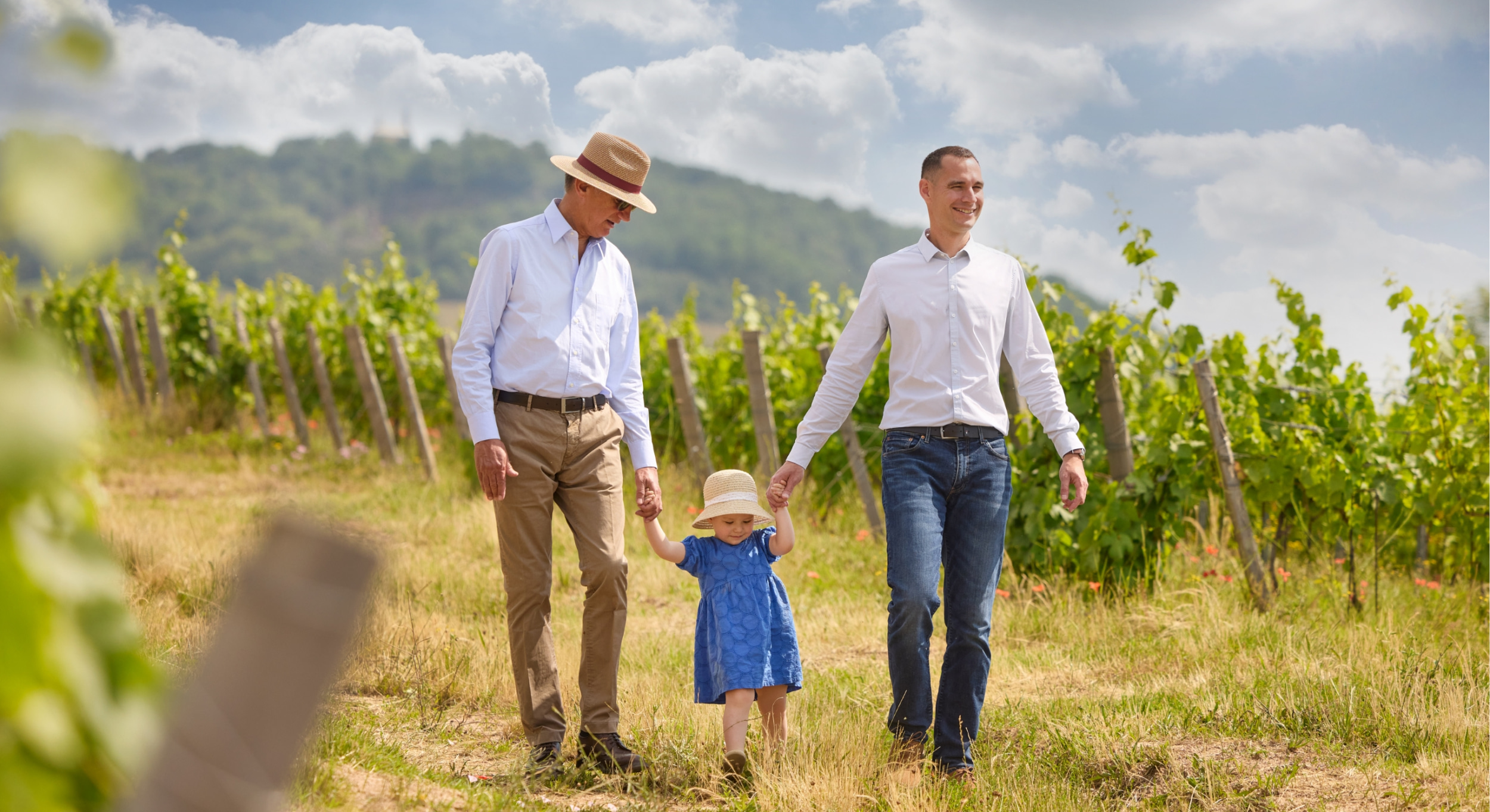
“If walls could talk…”
…Château de La Chaize would undoubtedly tell the story of countless generations.
Since its creation in 1676, this magnificent wine-producing Château, designed by Jules Hardouin-Mansart and André Le Nôtre, and whose main door bears the sculpture of Bacchus, the god of wine, has remained a family residence. The descendants of its founder, Jean-François de La Chaize d’Aix, were its devoted caretakers for three hundred and fifty years. In 2017, they passed the estate on to another family, that of Christophe Gruy. Committed to honoring its remarkable vineyards with utmost respect for nature, he and his nephew Boris Gruy – oenologist and Estate Manager – adopted an ambitious ecological approach in the aim of creating and developing "haute-couture" wines!
A 5-STAR MISSION
Our mission is twofold.
On the one hand, return the estate to its former glory with the restoration of the Château and all of its outbuildings under the supervision of the internationally renowned Didier Repellin, Chief Architect for France’s national historical monuments (Monuments Historiques) who, among some of his projects, oversaw the restoration of Villa Medici in Rome between 1995 and 2013 and, more recently, that of Lyon’s UNESCO World Heritage listed Hôtel-Dieu.
On the other hand, transform the entirety of the wine-producing estate by committing to an ambitious, through environmental approach in the aim of creating a model and emblem of viticulture that is in perfect harmony with its terroir and environmentally respectful from all points of view.
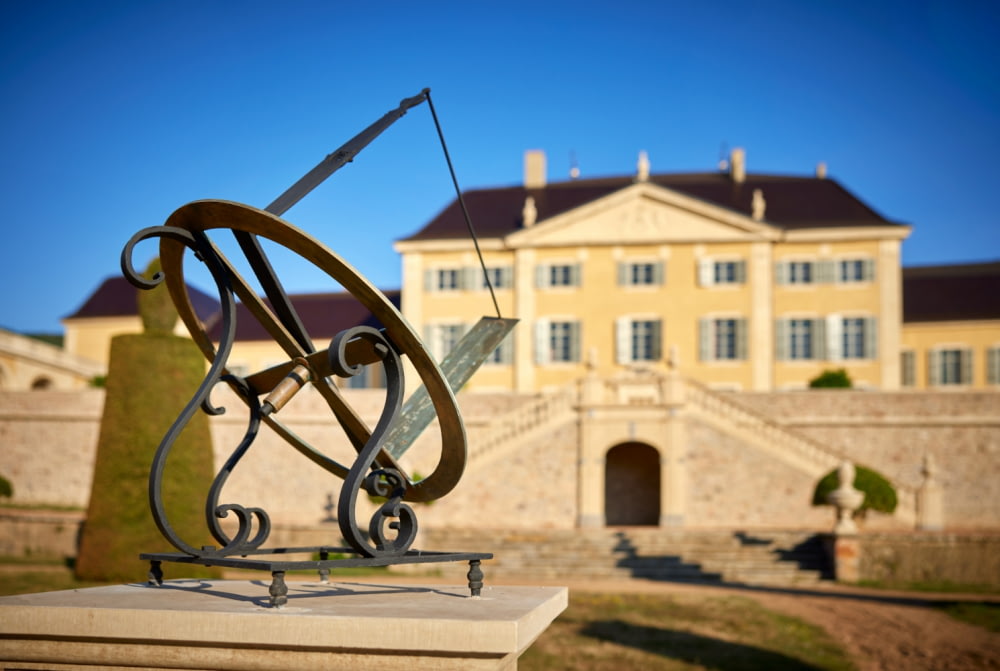
mission

A 5-STAR MISSION
Our mission is twofold.
On the one hand, return the estate to its former glory with the restoration of the Château and all of its outbuildings under the supervision of the internationally renowned Didier Repellin, Chief Architect for France’s national historical monuments (Monuments Historiques) who, among some of his projects, oversaw the restoration of Villa Medici in Rome between 1995 and 2013 and, more recently, that of Lyon’s UNESCO World Heritage listed Hôtel-Dieu.
On the other hand, transform the entirety of the wine-producing estate by committing to an ambitious, through environmental approach in the aim of creating a model and emblem of viticulture that is in perfect harmony with its terroir and environmentally respectful from all points of view.
MOVING TOWARD CONSERVATION AGRICULTURE
For ethical and ecological reasons, the Château de La Chaize estate is committed to a through movement toward conservation agriculture.
Five objectives were set out in order to carry this project out successfully to fruition:
* Manage the totality of the vineyards organically,
* Become autonomous in electrical and thermal energy with a small-scale geothermal plant, a solar panel park and batteries,
* Use machinery, vehicles and equipment that only run on electricity or hydrogen,
* Valorize each byproduct from the wine growing and making activity in the aim of “zero waste”,
* Achieve carbon neutrality.
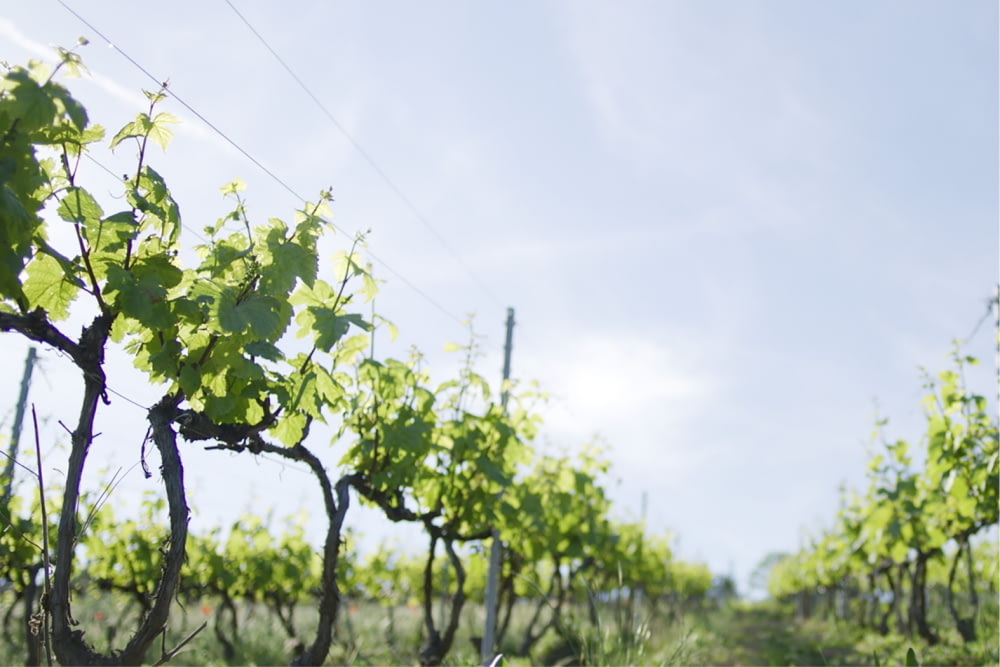
BLENDING IN WITH THE ENVIRONMENT
Just like Mother Nature, Château de La Chaize wants to create virtuous circles by putting the environment at the heart of its activities. More than just striving for a quality label, we are focused on making exemplary choices and decisions in all aspects of the running of the estate.
Vineyard management that is in harmony with the surrounding elements brings out the best in the grapes, and in turn the wines they are crafted from. Soil analyses were conducted by specialist Emmanuel Bourguignon, while the subsoils were analyzed by the equally reputed team of Lydia and Claude Bourguignon. The single vineyards they identified based on the location and exposure of the plots and future vinifications will benefit from the best each plot naturally has to offer.
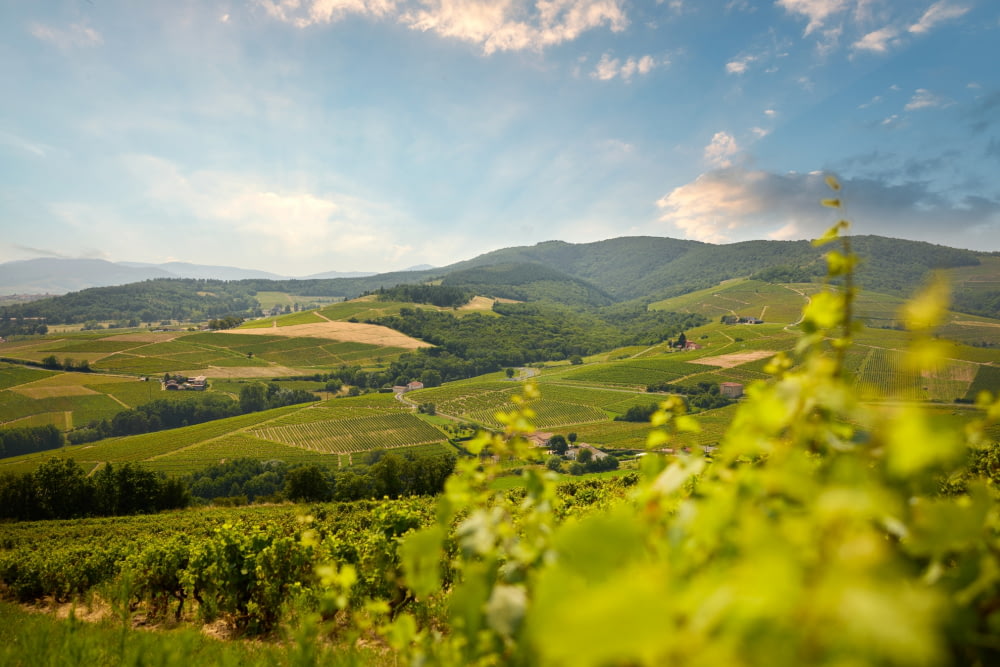
conservation
agriculture

MOVING TOWARD CONSERVATION AGRICULTURE
For ethical and ecological reasons, the Château de La Chaize estate is committed to a through movement toward conservation agriculture.
Five objectives were set out in order to carry this project out successfully to fruition:
* Manage the totality of the vineyards organically,
* Become autonomous in electrical and thermal energy with a small-scale geothermal plant, a solar panel park and batteries,
* Use machinery, vehicles and equipment that only run on electricity or hydrogen,
* Valorize each byproduct from the wine growing and making activity in the aim of “zero waste”,
* Achieve carbon neutrality.
the environment

BLENDING IN WITH THE ENVIRONMENT
Just like Mother Nature, Château de La Chaize wants to create virtuous circles by putting the environment at the heart of its activities. More than just striving for a quality label, we are focused on making exemplary choices and decisions in all aspects of the running of the estate.
Vineyard management that is in harmony with the surrounding elements brings out the best in the grapes, and in turn the wines they are crafted from. Soil analyses were conducted by specialist Emmanuel Bourguignon, while the subsoils were analyzed by the equally reputed team of Lydia and Claude Bourguignon. The single vineyards they identified based on the location and exposure of the plots and future vinifications will benefit from the best each plot naturally has to offer.
INNOVATION ALSO RELIES ON THE PAST!
The estate is the only wine-producing château at which André Le Nôtre’s gardens and the winery are equipped with a system that relies on gravity, the legacy of centuries of know-how:
• In the gardens: a basin, which collects water from various sources, supplies the various fountains
• At the winery and cellar: a network of wine-carrying pipes with a slope of over 2% allow us to transfer the juices and wines, from vinification through to bottling.
This does not mean that the latest technological means are not used at the estate - quite the contrary! They allow us to conduct the most in-depth analyses of soil profiles to best identify and qualify the estate’s various plots. They also play a major role at the winery and in the cellar to ensure that ideal conditions are constantly maintained for the vinification and ageing of each cuvée.
However, innovation also consists of going back to the roots of viticulture. The aim is to use exclusively local and natural fertilizers, whether they be mineral, vegetal or animal.
A return to crop cover management and mulching in combination with additions of organic matter depending on the soil’s composition allows for better management of moisture levels at the surface of the soil, better adaptation to drought conditions, less sensitivity to nutrient deficiencies and increased resistance to erosion. The wealth and diversity of all mineral, vegetal and animal species on the estate generate intense biological activity at the soil’s surface, which contributes to significant natural degradation of any pollutants.
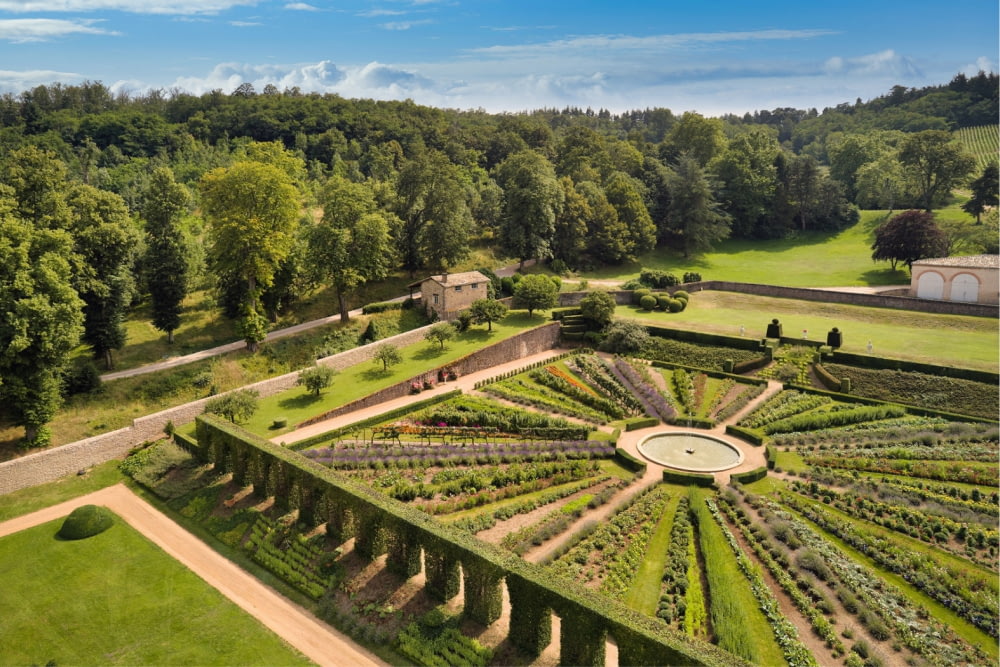
VINEYARDS WORTHY OF BEING DISCOVERED AND RECOGNIZED
This is just the beginning of a major undertaking. For such an estate to adopt a commitment to organic viticulture is not something that happens just like that, nor does it be taken for granted. It will take more than 10 years to transform and restructure the vineyards in order to attain the level aimed for by the women and men who work at the estate.
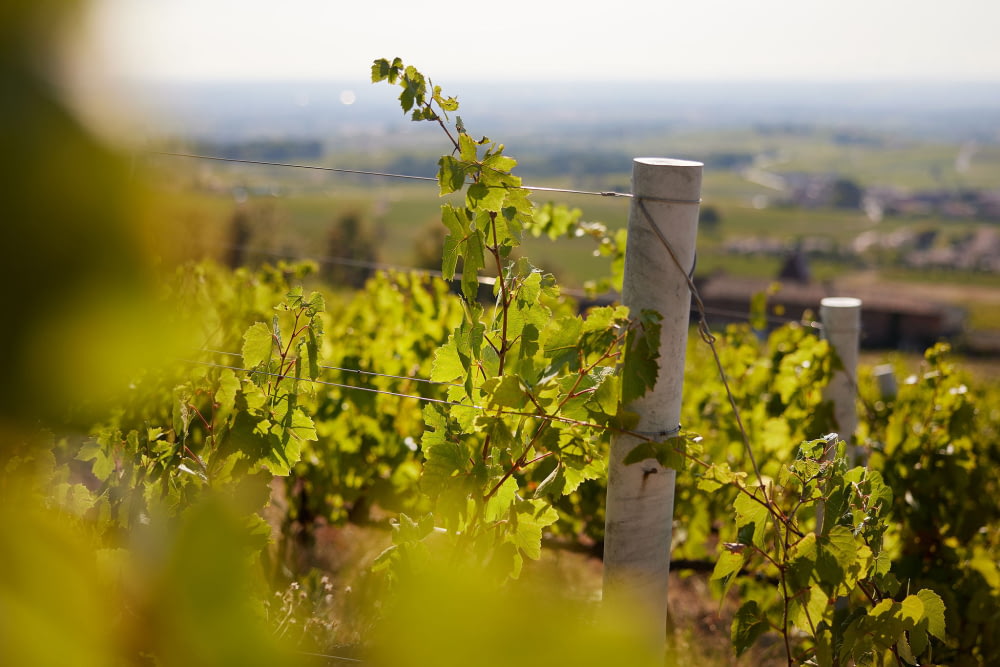
relies on the past!

INNOVATION ALSO RELIES ON THE PAST!
The estate is the only wine-producing château at which André Le Nôtre’s gardens and the winery are equipped with a system that relies on gravity, the legacy of centuries of know-how:
• In the gardens: a basin, which collects water from various sources, supplies the various fountains
• At the winery and cellar: a network of wine-carrying pipes with a slope of over 2% allow us to transfer the juices and wines, from vinification through to bottling.
This does not mean that the latest technological means are not used at the estate - quite the contrary! They allow us to conduct the most in-depth analyses of soil profiles to best identify and qualify the estate’s various plots. They also play a major role at the winery and in the cellar to ensure that ideal conditions are constantly maintained for the vinification and ageing of each cuvée.
However, innovation also consists of going back to the roots of viticulture. The aim is to use exclusively local and natural fertilizers, whether they be mineral, vegetal or animal.
A return to crop cover management and mulching in combination with additions of organic matter depending on the soil’s composition allows for better management of moisture levels at the surface of the soil, better adaptation to drought conditions, less sensitivity to nutrient deficiencies and increased resistance to erosion. The wealth and diversity of all mineral, vegetal and animal species on the estate generate intense biological activity at the soil’s surface, which contributes to significant natural degradation of any pollutants.
of being discovered
and recognized

VINEYARDS WORTHY OF BEING DISCOVERED AND RECOGNIZED
This is just the beginning of a major undertaking. For such an estate to adopt a commitment to organic viticulture is not something that happens just like that, nor does it be taken for granted. It will take more than 10 years to transform and restructure the vineyards in order to attain the level aimed for by the women and men who work at the estate.
CREATION OF AN AUTONOMOUS VILLAGE
At the focus of an unprecedented energetic and environmental transition to reach carbon neutrality and zero waste, the estate has committed to the creation of an autonomous village:
• The estate has been outfitted with a small-scale geothermal plant that uses the earth’s heat, by means of 28 injection and production wells that are over 200 meters (650 feet) deep, to produce the thermal energy required to regulate the temperature of our tanks and buildings.
• To satisfy our electrical needs, the estate is installing a photovoltaic solar park with battery storage, that is a true feat of integrated landscaping on this classified national heritage (Monuments Historiques) site.
• The estate’s waste water is treated by our own water treatment plant, planted with reeds, to keep our environmental impact to a minimum.
• We strive to protect the estate’s flora and fauna and reduce the impact of global warming by looking after the 300 hectares (741.3 acres) of surrounding woods and forests, which are carbon sink that stores C02 and cools the air.
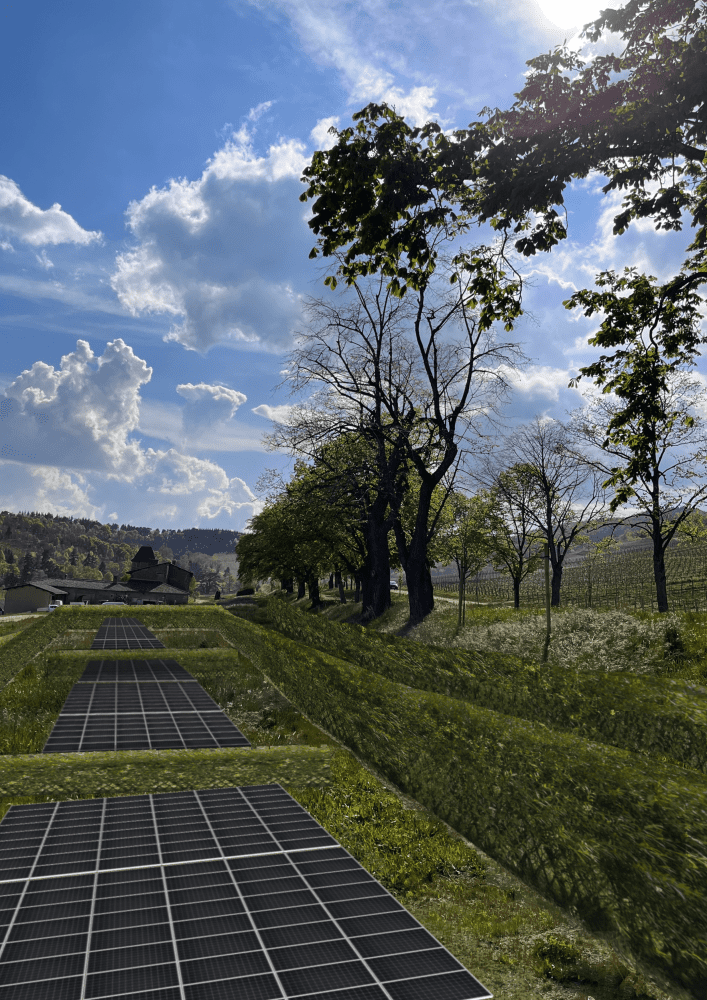
autonomous village

CREATION OF AN AUTONOMOUS VILLAGE
At the focus of an unprecedented energetic and environmental transition to reach carbon neutrality and zero waste, the estate has committed to the creation of an autonomous village:
• The estate has been outfitted with a small-scale geothermal plant that uses the earth’s heat, by means of 28 injection and production wells that are over 200 meters (650 feet) deep, to produce the thermal energy required to regulate the temperature of our tanks and buildings.
• To satisfy our electrical needs, the estate is installing a photovoltaic solar park with battery storage, that is a true feat of integrated landscaping on this classified national heritage (Monuments Historiques) site.
• The estate’s waste water is treated by our own water treatment plant, planted with reeds, to keep our environmental impact to a minimum.
• We strive to protect the estate’s flora and fauna and reduce the impact of global warming by looking after the 300 hectares (741.3 acres) of surrounding woods and forests, which are carbon sink that stores C02 and cools the air.
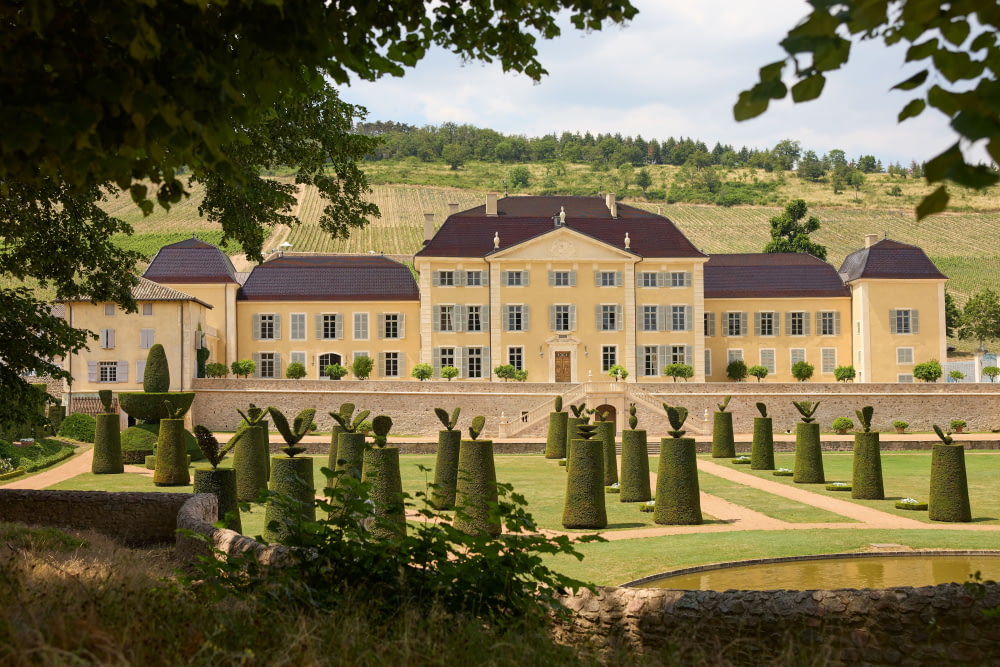
A prestigious estate
Château de La Chaize is a wine-producing estate that covers a surface area of over 450 hectares (1,112 acres), including 150 hectares (370.65 acres) of vineyards.
This unique configuration offers an oasis of greenery with an ecosystem that allows us to implement an approach to viticulture that promotes soil life, plant diversity of and sustains animal species. Each aspect contributes to the balance and wealth of this ecosystem. The forests and meadows that surround the estate form a natural barrier that protects the vines and allows us to manage the biotopes to best express the quintessence of the vineyards.
In our vision of ecology, which goes far beyond plot-based organic viticulture, we take into account soil life and the milieu’s biodiversity, as well as water management and carbon sequestration. We have therefore created small catch basins and a natural water treatment area, planted with reeds. The recycled water is used for watering the 7,000 trees and shrubs that have already been planted. Our objective is to have 50,000 planted over the estate’s 450 hectares (1,112 acres).
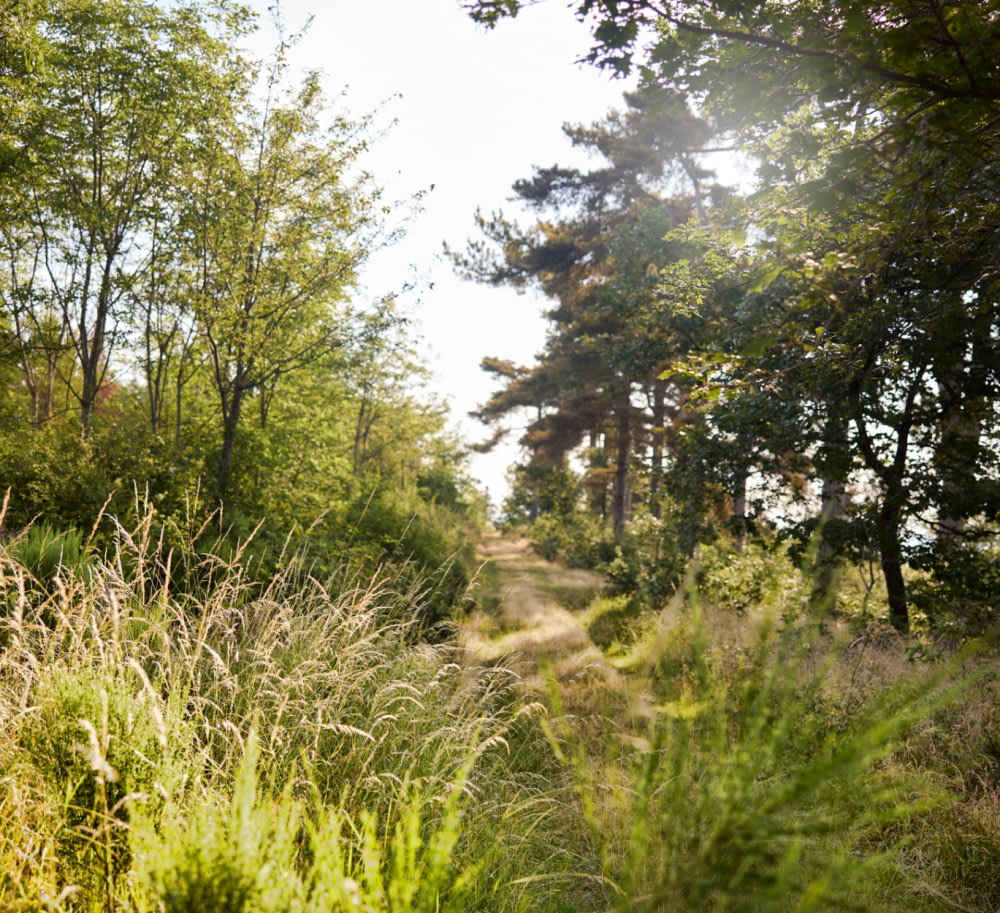
Woods & Forests
The estate’s woods, which cover 300 ha (541.3 acres) on a single piece of land, are made up of deciduous (holm oak, ash, acacia, etc.) and coniferous (Douglas fir, cedar, etc.) trees.
The diversity of these species, and the delimited geographical configuration contribute significantly to the preservation and equilibrium of the biotopes. Maintenance of these areas, which follows a simple forest management plan, allows the forest to regenerate itself progressively without putting the established balances at risk.
The biomass that results is then turned into wood chips, which provide ecological fuel.
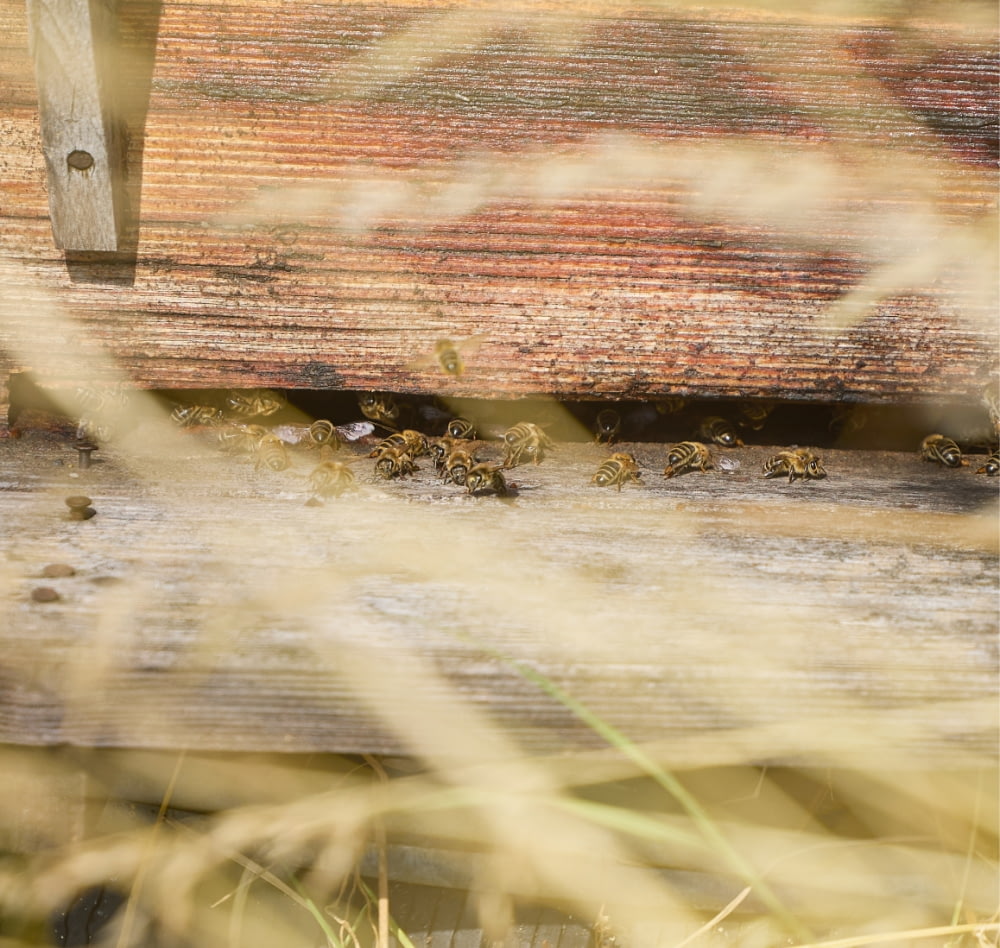
Beehives to encourage pollination
Château de La Chaize owns 25 bee hives, which are located above the "Combiliaty" vineyard. They produce approximately 500 kg of wildflower honey each year.
Bees can travel up to 3 kilometers (2 miles) from their hives to collect pollen from the estate’s various trees, shrubs and plants. As a result, the bees increase pollination and improve the productivity of our fruit trees.
We do as much as we can to ensure their well-being by promoting flower meadows, planting melliferous tree species, creating water basins and combatting their predators (the Asian hornet in particular).
The honey produced is packaged at the estate by our teams and sold at our shop on the premises!
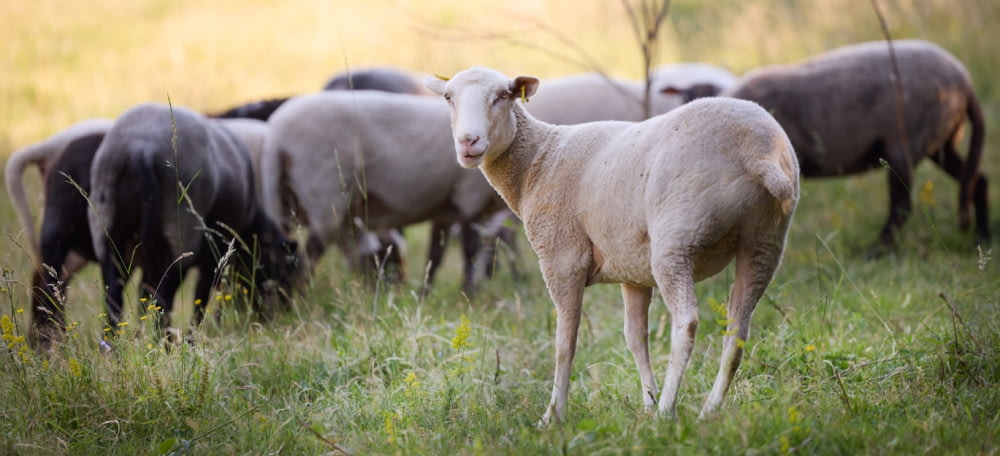
Sheep to maintain our vineyards in winter
We also have a flock of approximately fifteen sheep who allow us to promote eco-grazing in the vineyards.
This eco-agricultural method consists of letting our sheep maintain the vineyards in the autumn and winter. Not only do they fertilize the soil, but their grazing controls crop cover growth between the rows of vines.
As soon as the first vine leaves start to appear, the sheep are moved to the estate’s many meadows, to prevent them from being eaten and to allow the sheep to enjoy grazing on natural grasses!
